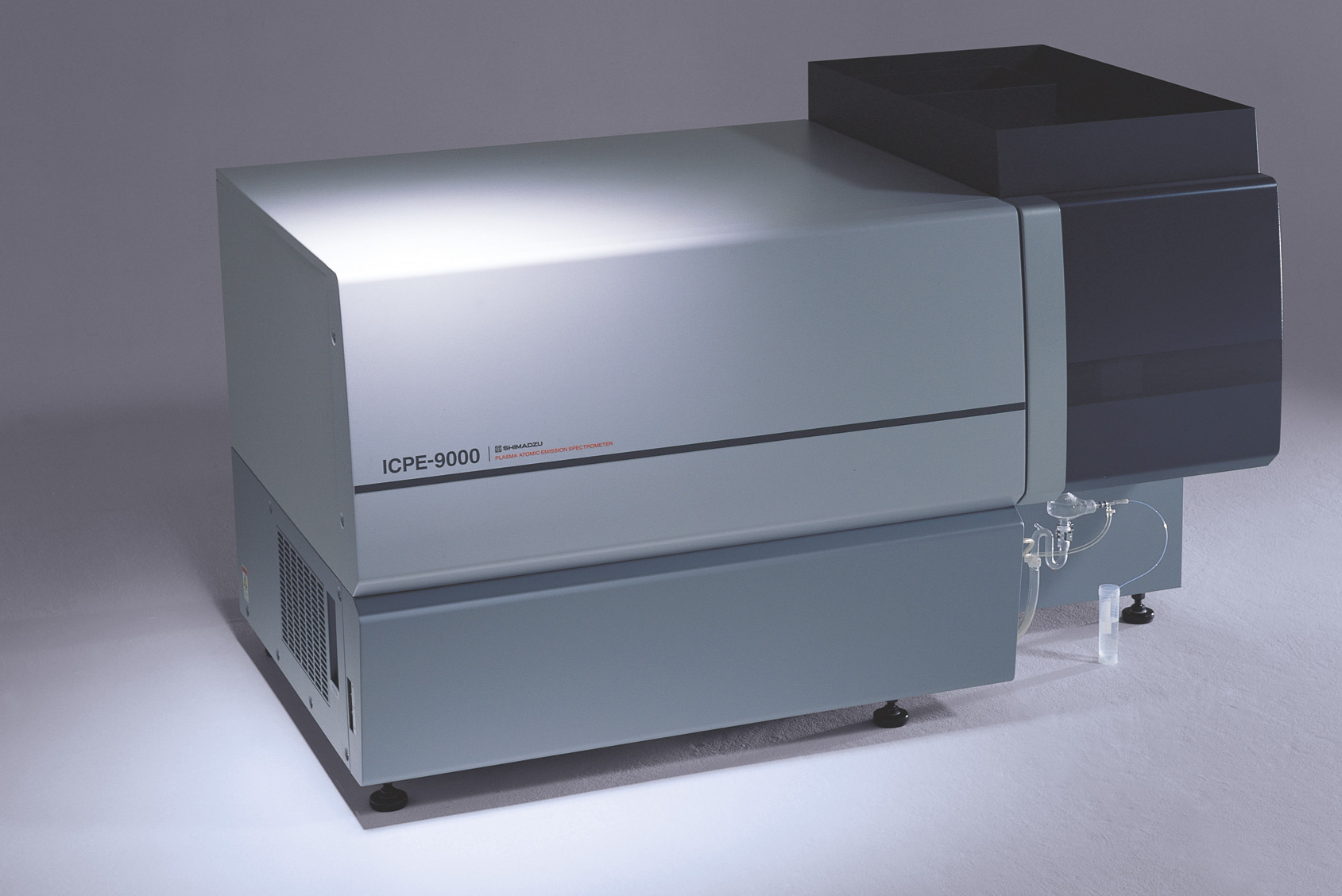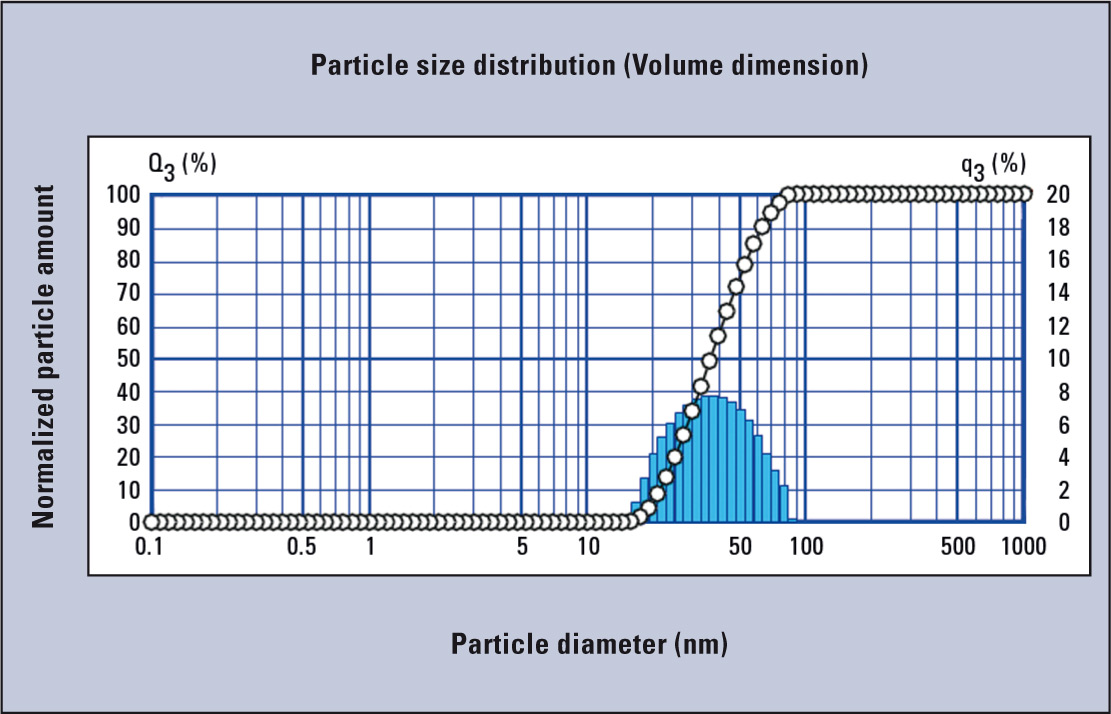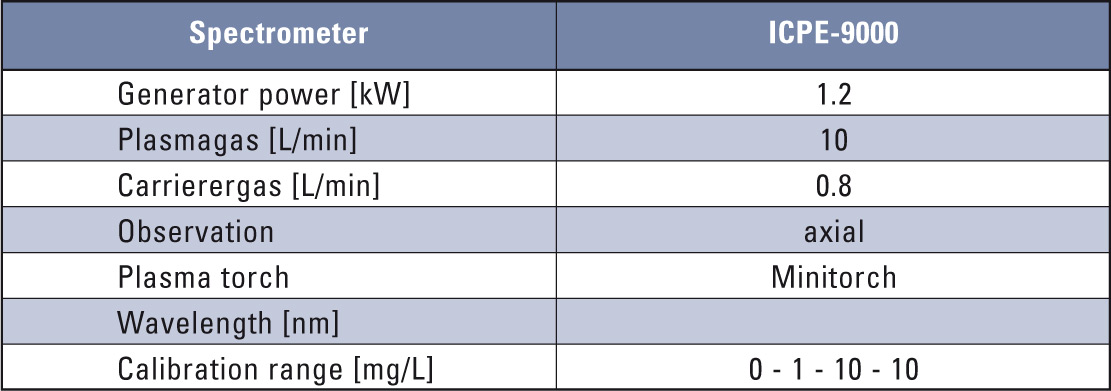Shake well before use
Laser diffraction and ICP-OES spectrometry – characterization and quantification of TiO2 nanoparticles in sunscreen
 Figure 1: Simultaneous ICP-OES spectrometer ICPE-9000 with CCD detector
Figure 1: Simultaneous ICP-OES spectrometer ICPE-9000 with CCD detector
Nowadays, nanotechnology is present in our daily life and nano particles are commonly used in many applications such as nanotubes for textiles, nanotechnology for food products, and cosmetics such as sunscreens and other bodycare products including shower gels and toothpastes.
The Scientific Committee on Emerging and Newly Identified Health Risks (SCENIHR) was established by the European Commission in 2004 to promote scientific advice on the safety of new technologies such as nanotechnology and nanoparticles [1].
What is a nano particle?
A material is called a nano-object when one, two or three external dimensions are present in nanoscale, so a nanoparticle is an object with all three dimensions in nanoscale. These definitions were developed in 2008 by the Technical Committee ISO/TC 229 “Nanotechnologies” in collaboration with the Technical Committee CEN/TC 352 “Nanotechnologies” [2].
Nanoparticles can be of different chemical natures. Both inorganic and organic nanoparticles are known. They can consist of just one element such as metal or carbon, or of compounds like oxides, nitrides, etc. Nanocomposites are understood to be composite materials having at least one component in the form of a nano-object.
Nanoparticles often build clusters of aggregates or agglomerates. In contrast to aggregates, agglomerates can be ground into primary grains through optimal mixing. Their shape can therefore be very inconsistent and they may take a wide variety of forms, having considerable influence on their properties. In principle, due to their enormous surface-to-mass ratio nanoparticles behave completely differently than larger composites.
Since opinions differ on the behavior of nanoparticles on the human organism, many studies dealing specifically with toxicity of nanoparticles have recently been published. Data on the behavior and toxicity of particles comes mainly from studies on inhaled nanoparticles. Data on particle migration through the skin is also available in detail from pharmaceutical studies.
Nano particles in sunscreen
Sunburn on the human skin is caused by exposure to ultraviolet light in the medium wave range (UVB, 280 – 320 nm) and long wave range (UVA, 320 – 400 nm). UVB rays cause reddening and inflammation of the skin, as well as blistering, while UVA rays cause darkening and aging (wrinkles and sagging) of the skin.
Nano particles made of titanium dioxide and zinc oxide are used in sunscreen to block exposure to ultraviolet rays. Titanium dioxide has been demonstrated to be effective in shielding against UVB, while zinc oxide effectively screens out UVA rays.
Nowadays, the TiO2 particles in sunscreens protecting against UVB are in nanoscale and only visible using an electron microscope. The typical white film on the skin after using sunscreen in former times has meanwhile disappeared, since the nano particles of TiO2 are almost invisible.
To evaluate the size of nano particles in sunscreen a nanoparticle size analyzer has been used. The Shimadzu IG-1000 uses the induced grating method, based on a new principle for measuring nanoparticle size using the phenomenon of induced electrophoresis and diffracted light.
With conventional dynamic light scattering, the light scattered by particles decreases sharply for particle sizes of less than 100 nm. Furthermore, physical restrictions in the single nano region of particle sizes of less than 10 nm make it difficult to detect scattered light, and measurement of particle sizes also becomes difficult. Since the IG-1000 method does not use scattered light, it is free from these physical restrictions and does not require the input of refractive index as a measurement condition. It therefore allows nanoparticle size to be measured simply with high sensitivity. It is particularly effective for nanoparticle size distribution in the range of 0.5 to 200 nm.
The samples were diluted x 10 with water and put in an ultrasonic bath for 30 seconds. Finally, a drop of triton X-100 was added to reduce surface tension.
The sunscreen samples show a typical particle size distribution of TiO2 nano particles as shown in figure 2 with a mean particle diameter of 35 nm.
 Figure 2: Particle size distribution of Titanium dioxide
Figure 2: Particle size distribution of Titanium dioxide
Quantitative Analysis using ICPE-9000
For quantitative analysis of TiO2 nanoparticles the simultaneous ICPE-9000 with minitorch has been used. The system is suitable for axial and radial plasma observation. Its high-performance Echelle optics use a large-scale CCD detector with 1024 x 1024 pixels and can determine all elements in various concentration levels simultaneously with just one analysis.
The ICPEsolution software’s reprocessing function enables determination of additional elements or changing of concentration range for alternate wavelengths without the need for new measurements. The vacuum optics combined with mini torch technology reduce argon gas consumption considerably. The torch used in this experimental work reduces argon gas consumption to almost half that of conventional torches without loss in sensitivity. In addition, time-consuming rinsing of the optics with ultrapure gas is no longer necessary. The system is ready for operation and is stable within the shortest possible time. When equipped with the optional autosampler, the system can be fully automated for high sample throughput operation. The system status is monitored continuously and can be accessed at any time.
Software supported by two helpful “assistants”
The ICPEsolution software offers additional support with two integrated assistant functions. The “Development Assistant” creates complex calibrations, from selection of optimal wavelengths up to the composition of standard concentrations. Together with the “Monitor Function” for qualitative analysis, this assistant highlights possible interference problems or incorrect wavelength selection before the actual calibration takes place, and displays solutions for method modification or error correction. The “Diagnosis Assistant” evaluates data already measured, and compares this with information from various databases. Data evaluation and recalculation have never been more straightforward.
Sunscreen samples with different sun protection factors have been measured. The sun protection factor is an indicator of the effectiveness of sunscreen – the higher the SPF, the more protection a sunscreen offers against UV-B radiation.
 Table 1: Instrumental Parameters for the quantification of nano particles in sunscreen
Table 1: Instrumental Parameters for the quantification of nano particles in sunscreen
Qualitative analysis was first performed to see the basic composition and element distribution. A quantitative method was then developed based on the parameters indicated by the “Development Assistant.” For the samples based on TiO2 nano particles the following parameters were used (see table 1).
Summary
Distribution of TiO2 nano particles in the sunscreen lotions was found not to be homogeneous, so it is important to shake the container well before taking a sample. TiO2 concentration is related directly to the sun protection factor. The Ti-concentration in sunscreen with the highest protection factor (30 in this experiment) was 210 mg/L. Results of all samples taken for comparison are summarized in table 2.
 Table 2: Ti concentrations in sunscreen samples with different light protection factors
Table 2: Ti concentrations in sunscreen samples with different light protection factors
Titanium dioxide (TiO2) nanoparticles are manufactured worldwide in large quantities for use in a wide range of applications including pigment and cosmetic manufacturing such as sunscreen. Although TiO2 is chemically inert, TiO2 nanoparticles can cause negative health effects such as respiratory tract cancer in rats. However, the mechanisms involved in TiO2-induced genotoxicity and carcinogenicity have not been clearly defined and are poorly studied in vivo [3]. Dermal penetration of TiO2 nanoparticles through the outer layer of the skin is still the subject of further investigation [4].
In contrast to the variety of toxicological opinions the analytical results are very clear. The IG-1000 laser diffraction particle size analyzer and the ICPE-9000 ICP-OES spectrometer are ideal tools for characterization and quantification of TiO2 nanoparticles in sunscreens.
Literature
- EUROPEAN COMMISSION, HEALTH & CONSUMER PROTECTION DIRECTORATE-GENERAL, Directorate C – Public Health and Risk Assessment C7 – Risk assessment, 2006
- Nanotechnology Standards for Health, Safety, and Environmental Factors Nanotechnology Law Report, 2008
- Cancer Res 2009; 69: (22). November 15, 2009
- Australian Government, www.tga.gov.au, A review of the scientific literature on the safety of nanoparticulate titanium dioxide or zinc oxide in sunscreens